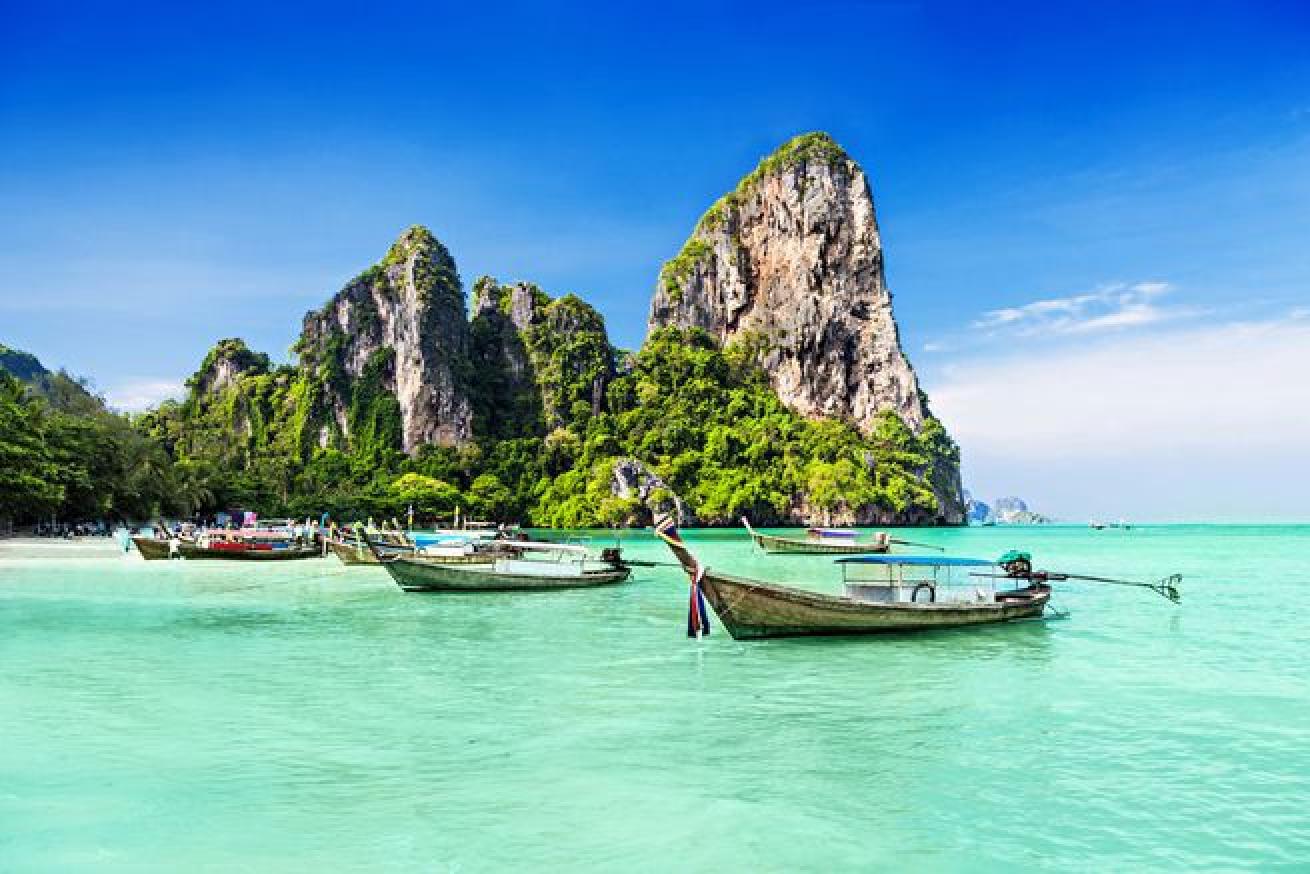Thailand

ShutterstockThailand
Shaped like an elephant's head, with a long, slender peninsula forming its trunk, Thailand offers dive opportunities in two distinct bodies of water: the Gulf of Thailand to the east and the Andaman Sea to the west. The Gulf is known for abundant marine life and the laidback dive hub of Koh Samui, but it's hard to beat the Andaman Sea for clear seas, spectacular reefs and animal encounters. Many divers opt for day trips to the Andaman Sea out of Phuket, an island in the southern reaches of the country, but to get to the sea's unspoiled reefs and islands, live-aboards are a must--and there are literally hundreds of them plying these waters. Perhaps the number-one destination for live-aboards is the Similan Islands, a chain of nine granite islands rimmed with white sand beaches. Farther north are the Burma Banks, a series of seamounts rising from 1,000-foot depths to just below the surface, and the Mergui Archipelago. Though part of neighboring Myanmar, the lush Mergui Archipelago is a geologic continuation of the reef structure and islands of the eastern Andaman. For the entire Andaman Sea area, conditions are best between November and March, when you can count on sunny skies, balmy breezes and moderate temperatures.
The Similan Islands, a national park protected under Thai laws, are blanketed in lush tropical jungle and ringed by some of the most exquisite beaches in the country. Among the Similans' top dive sites are East Of Eden, where you'll find schools of opal sweepers densely packed in coral crevices, and Hideaway, where lionfish and long-snout butterflyfish swim along high-profile coral heads. Perhaps the most iconic dive attraction in all the Andaman Sea is Richelieu Rock, in the Surin Islands, due north of the Similans. Richelieu is just a speck on the map, too far offshore for day boats. But for divers on live-aboards, the reward is visibility often in excess of 120 feet and stunning biodiversity. Along Richelieu's eastern pinnacle, expect to see sealife in all shapes and sizes, from enormous Goliath grouper (known as Malabar grouper in these parts) to the littlest creatures, such as tiger-tail seahorses and ghost pipefish. In years past, Richelieu Rock was prime whale shark country, but there were only two sightings last year. Overfishing in their migratory route seems the obvious culprit
The Mergui Archipelago, similar in size to the Bahamas, covers 14,000 square miles and includes about 800 islands, many uninhabited. Wild elephants and tigers are said to roam the larger, more remote islands. While you're likely to run across other dive boats in the Similans, in Mergui there's a sense that you've stumbled across an untouched marine wilderness. A must-dive here is Three Islets, which consists of one small island and two large rocks, each far enough apart to be considered separate sites. The stars of the show are the small creatures, like juvenile ribbon eels, seahorses, and both fimbriated and jeweled morays, often occupying the same hole. Another site, Bang Bang Buffet (so named for all the tank-banging among divers eager to show their buddies the creatures they've discovered) swarms with cuttlefish, black-blotched morays and lionfish. But the real headliners--if something this small can get marquee billing--are the rare rabbit-ear nudibranchs.
Weather: Tropical and humid for the majority of the country during most of the year. The southern region of Thailand has only two seasons -- wet and the dry. These seasons do not run at the same time on both the east and west side of the peninsular. On the west coast, the southwest monsoon brings rain and often heavy storms from April through to October, while on the east coast the most rain falls between September and December.
Average Water Temp: In the Andaman Sea, water temperatures are usually warm, ranging from 79 to 84 degrees, though it can be quite a bit cooler at depth, especially during March and April. In the Gulf of Thailand, water temps are in the low to mid-80s, with the warmest conditions during May and June. February through September is generally the best time for diving, when conditions improve.
Average Visibility: Water clarity varies from less than 20 feet to 150 feet or more, depending on the season. In general, conditions are best beginning in November. Plankton blooms in March and April drop the vis. Most live-aboards stop operating here from June through October, the southwest monsoon season, when vis can be excellent but the seas can be rough, especially at exposed sites. In the Gulf of Thailand, vis is not as good because of freshwater runoff, plankton and water circulation.
DIVE DEALS PARTNERS Worldwide Dive and Sail










